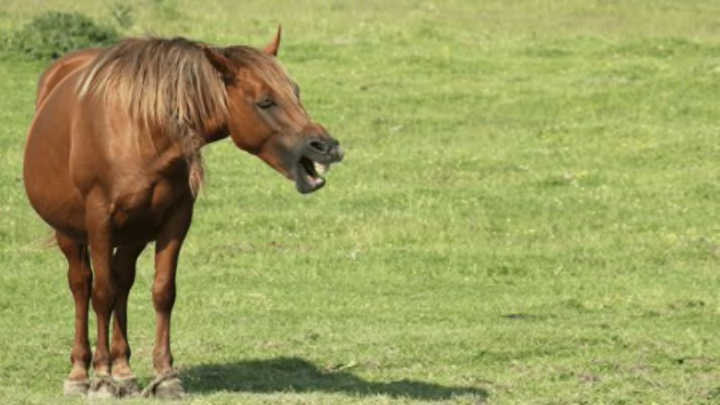When it comes to the complexity of their vocal range, horses have more in common with singing birds than other mammals.
Domestic horses are social animals that prefer to live in herds, and they disseminate information over long distances by whinnying, which research suggests can convey information about the caller’s identity, sex, and body size. Whinnying also allows horses to communicate the nature and strength of their emotional states using two different frequencies, according to a new study in the journal Scientific Reports.
Scientists from ETH Zürich’s Institute of Agricultural Sciences introduced 20 small groups of horses to four different social situations while monitoring their heart rates to determine how excited they were. To produce positive or negative emotions, the horses were separated from or reunited with the horses they lived with. Since horses are herd animals, being separated from familiar horses causes stress, and they express negative emotions. When reunited with their friends, they tend to express positive emotions. As a control, the scientists also recorded audio from when all of the horses were at home in their stalls.
The horses whinnied in two fundamentally distinct frequencies: one that described the horse’s emotional arousal (calm or excited) and emotional valence (negative or positive). This phenomenon, called biphonation, is rare among mammals and more commonly observed in birdsong. (Click here to listen to audio of a whinny in a high frequency tone, followed by a lower frequency tone. And listen to two horses expressing negative and positive emotions here.)
The researchers labeled the two fundamental frequencies F0 (lower) and G0 (higher). They found that when a horse is more excited, it whinnies in a higher F0 frequency, regardless of whether it’s happy or upset. When expressing a positive emotion, its whinnies exhibit a lower G0 frequency compared to when expressing negative emotions (which have a higher G0 frequency). They have yet to explore how exactly horses produce such complex sounds physiologically.
This finding is part of a larger research project aimed at understanding the differences between the communications of wild and domestic animals. The next step involves studying whether wild horses express emotion in similar ways, or if the expressions of domestic horses (as well as pigs and cattle) have been influenced by their human companions.
[h/t: Futurity]
